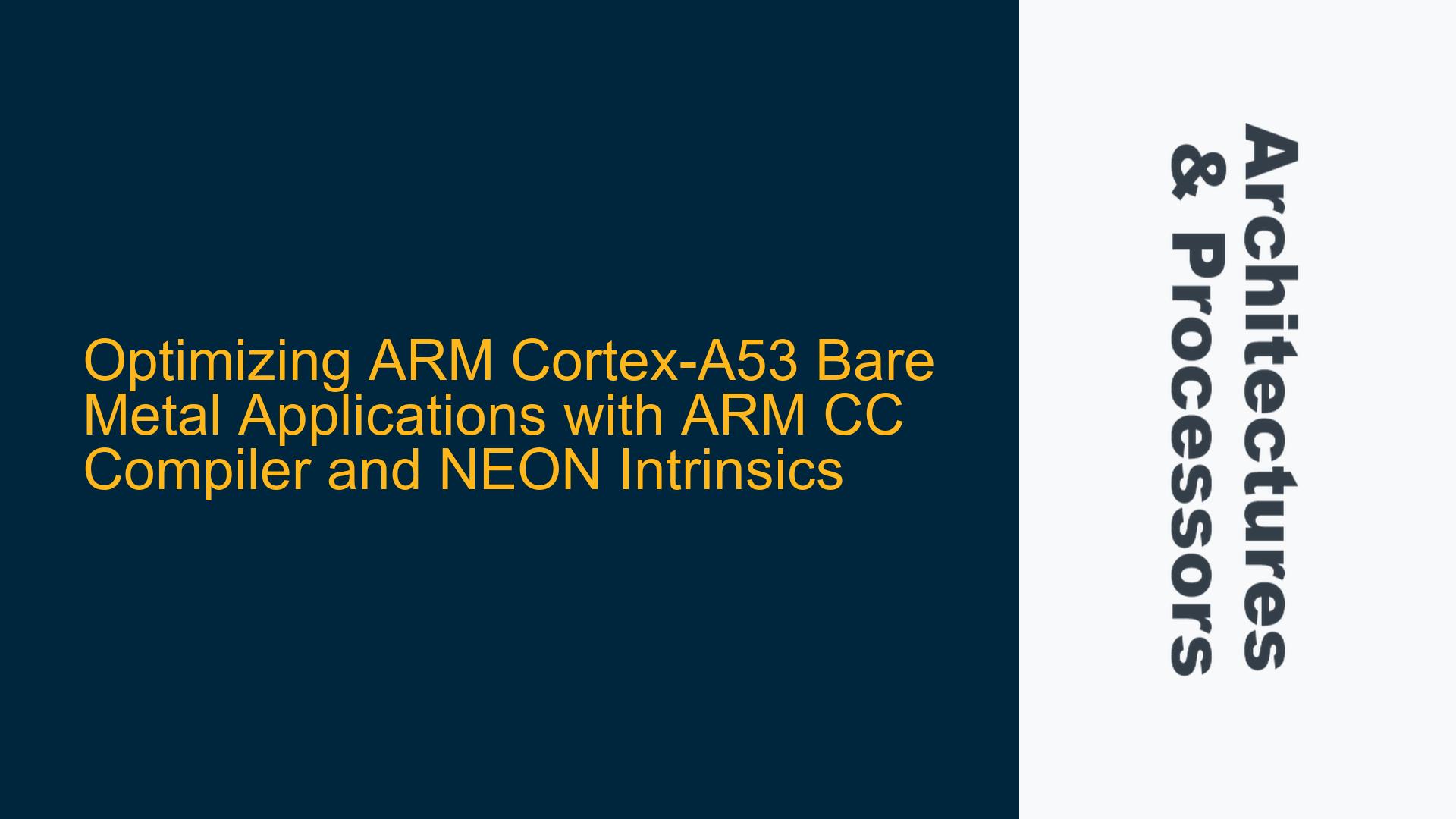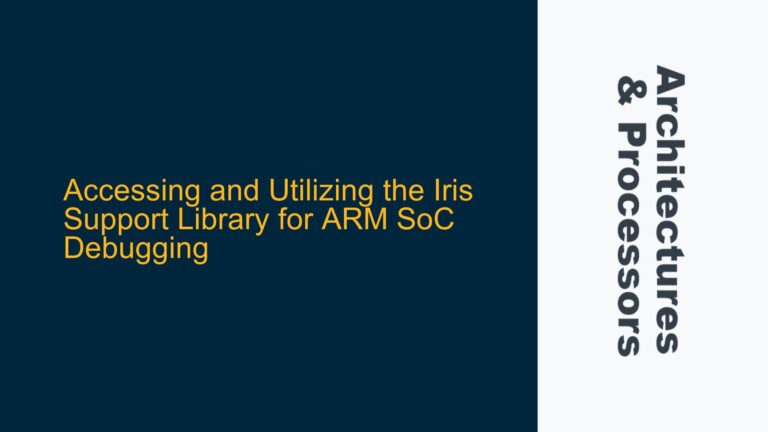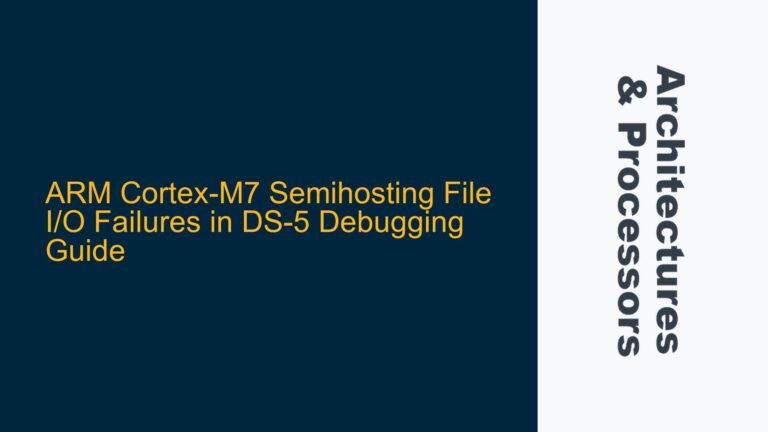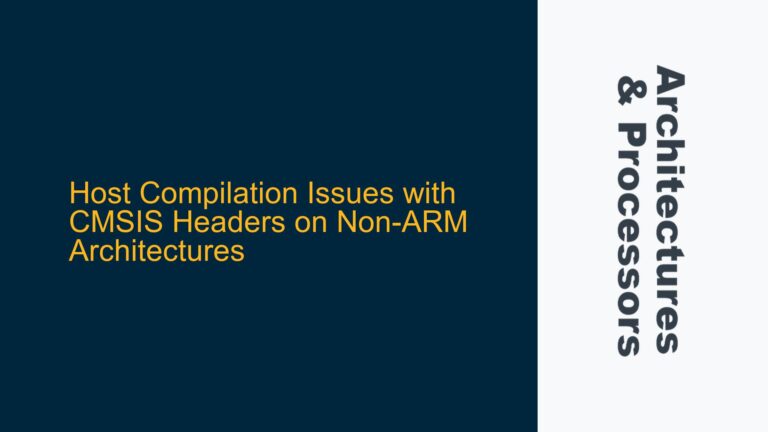Migrating from GCC to ARM CC Compiler for ARM Cortex-A53 Bare Metal Applications
When transitioning from the GCC compiler to the ARM CC compiler for bare metal applications on the ARM Cortex-A53, several critical considerations must be addressed to ensure a smooth migration. The ARM Cortex-A53, a 64-bit ARMv8-A architecture processor, is widely used in embedded systems due to its balance of performance and power efficiency. The migration process involves not only switching the compiler but also ensuring that the hardware definition files, BSP (Board Support Package), and IDE (Integrated Development Environment) configurations are compatible with the new toolchain. This post will delve into the intricacies of this migration, focusing on the challenges and solutions related to optimizing code that utilizes NEON intrinsics.
Hardware Definition File Compatibility and BSP Configuration
The first major consideration when migrating from GCC to ARM CC compiler is the compatibility of the hardware definition files. These files, often provided by the SoC vendor or board manufacturer, contain critical information about the hardware configuration, such as memory maps, peripheral registers, and interrupt vectors. The ARM CC compiler must be able to interpret these files correctly to generate accurate and optimized machine code.
The hardware definition files are typically written in a hardware description language (HDL) or a high-level language like C. When using the ARM CC compiler, it is essential to verify that these files are compatible with the new toolchain. This involves checking for any compiler-specific directives or macros that may be present in the files. For instance, GCC-specific pragmas or attributes may need to be replaced with their ARM CC equivalents. Additionally, the ARM CC compiler may have different default behaviors or optimizations that could affect how the hardware definition files are interpreted.
The BSP, which provides the necessary software abstractions for the hardware, must also be reconfigured to work with the ARM CC compiler. This includes updating the linker scripts, startup code, and any low-level drivers that interact directly with the hardware. The linker scripts, in particular, must be carefully reviewed to ensure that they are compatible with the ARM CC compiler’s output format. The startup code, which initializes the hardware and sets up the runtime environment, may also need modifications to account for any differences in how the ARM CC compiler handles initialization sequences.
Optimizing NEON Intrinsics with ARM CC Compiler
NEON intrinsics are a powerful feature of the ARM Cortex-A53 architecture, allowing developers to leverage the processor’s SIMD (Single Instruction, Multiple Data) capabilities for high-performance computing tasks. When migrating from GCC to ARM CC compiler, it is crucial to ensure that the NEON intrinsics are optimized for the new toolchain. The ARM CC compiler may offer different optimization strategies or code generation techniques that can significantly impact the performance of NEON-based code.
One of the key considerations when optimizing NEON intrinsics with the ARM CC compiler is the alignment of data. NEON operations are most efficient when the data is aligned to 16-byte boundaries. The ARM CC compiler may provide specific directives or attributes to ensure proper alignment, which can lead to significant performance improvements. Additionally, the ARM CC compiler may offer more advanced optimization options, such as loop unrolling or vectorization, that can further enhance the performance of NEON intrinsics.
Another important aspect of optimizing NEON intrinsics with the ARM CC compiler is the handling of data dependencies. The ARM Cortex-A53 is a superscalar processor, capable of executing multiple instructions in parallel. However, data dependencies between instructions can limit the processor’s ability to exploit this parallelism. The ARM CC compiler may provide tools or options to analyze and optimize data dependencies, allowing for more efficient use of the processor’s resources.
Implementing Data Synchronization Barriers and Cache Management
When migrating to the ARM CC compiler, it is also essential to consider the impact on data synchronization and cache management. The ARM Cortex-A53 features a multi-level cache hierarchy, which can significantly affect the performance of bare metal applications. The ARM CC compiler may provide specific instructions or directives to manage the cache more effectively, such as cache preloading or flushing.
Data synchronization barriers are another critical consideration when optimizing code for the ARM Cortex-A53. These barriers ensure that memory operations are performed in the correct order, preventing issues such as data races or stale data. The ARM CC compiler may offer specific intrinsics or directives to insert data synchronization barriers at the appropriate points in the code, ensuring that memory operations are properly synchronized.
In addition to data synchronization barriers, the ARM CC compiler may also provide tools to manage the cache more effectively. For example, the compiler may offer options to control the cacheability of specific memory regions or to prefetch data into the cache before it is needed. These optimizations can significantly improve the performance of bare metal applications, particularly those that involve large data sets or frequent memory accesses.
Conclusion
Migrating from the GCC compiler to the ARM CC compiler for bare metal applications on the ARM Cortex-A53 involves several critical considerations, including hardware definition file compatibility, BSP configuration, and optimization of NEON intrinsics. By carefully addressing these issues, developers can ensure a smooth transition to the new toolchain and take full advantage of the ARM CC compiler’s advanced optimization capabilities. Additionally, implementing data synchronization barriers and effective cache management can further enhance the performance of bare metal applications on the ARM Cortex-A53. With the right approach, developers can achieve significant performance improvements and unlock the full potential of the ARM Cortex-A53 architecture.






